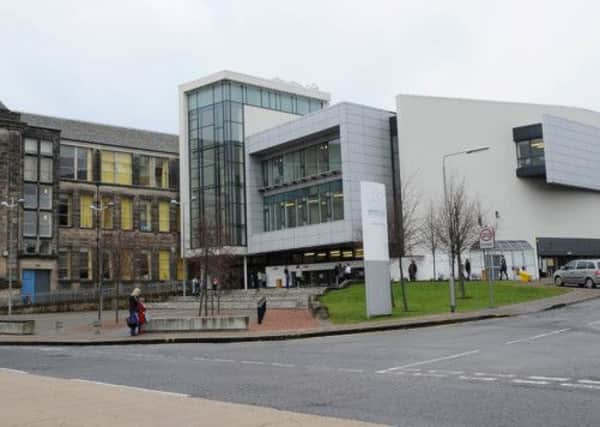College mergers set to excite students


AS A new term begins, many college students will arrive at campuses with bright, new names above their doors.
This is because over the last few years, Scotland’s college sector has been quietly and quickly reshaping – transforming itself through a series of mergers to be completed by early next year.
Advertisement
Hide AdAdvertisement
Hide AdLess than two years ago, the Scottish Government published plans for post-16 education reform in Putting Learners at the Centre, a report that recognised the need to reshape the college system into something that would become more efficient and provide greater opportunities for students. The changes would improve the student journey by making it easier to navigate and creating better routes to further study and employment.
The report pointed the way to a system of large regional colleges with better connections to industry for courses that would provide students with the skills employers needed to expand their businesses and grow regional economies.
The scale of change was huge. Before the mergers, the 12 regions outwith the Highlands and Islands had 29 colleges. Today, following the latest mergers just a few weeks ago, there are 21 colleges in those regions. By the time the merger programme is complete next year it will be down to 15.
The first steps on the journey to bigger, more regional colleges were taken in Glasgow, a city which, before 2010 had nine colleges competing for students and resources. In September 2010, three Glasgow colleges merged to form the City of Glasgow College, which became Scotland’s largest college, serving more than 32,000 students with more than 2,600 courses and an exciting new campus on the way. The new college, like others across Scotland, has developed its partnerships with universities to allow students to progress smoothly on to degree-level study and has forged links to businesses to ensure its courses are relevant to employers.
Last year, Edinburgh’s three colleges merged to form Edinburgh College, an even larger college than City of Glasgow. Combining the strengths of Telford, Stevenson and Jewel & Esk colleges, the merger removed expensive and sometimes confusing duplication of learning opportunities and the consequential competition for students. The new college offers a broad choice of courses, again benefitting from strong links to employers and local universities to give students in the Edinburgh city region superb opportunities for career progression and further study.
Both of these new colleges were formed as a result of multi-college mergers, a huge undertaking for the college leaders and staff, but both completed without interruption to learning for students.
As we move into the new academic year we’re picking up the pace again. On 1 August, a further four college mergers formed the new Ayrshire College, Fife College, West College Scotland and Glasgow Clyde College. In November, four more mergers will create new colleges in Aberdeen and Aberdeenshire, Glasgow, Lanarkshire and Tayside. In April next year, Coatbridge will join the Lanarkshire merger.
Despite clear recognition that change was needed reshaping the college sector has inevitably been a complex and challenging task. However, the Funding Council, the Scottish Government and the college sector have worked hard to ensure mergers have progressed smoothly and quickly. Fantastic work has been done by brilliant people. Effectively and positively, the principals of the new regional colleges and their teams have been bringing together talent from different places with the minimum of disruption and fuss.
Advertisement
Hide AdAdvertisement
Hide AdThe 13 college regions were created to simplify things for both students and employers. The regions, together with the two separate specialist colleges, Sabhal Mor Ostaig (Gaelic) and Newbattle Abbey College (residential adult education) are achieving that goal. The changes have also made it easier to introduce new funding arrangements meaning colleges now have agreements with the Scottish Funding Council on how they will deliver the national priorities of the Scottish Government.
The creation of larger regional colleges has led to a more recognisable identity for students and their prospective employers. Student associations have merged too, bringing greater strength of representation and a stronger sense of identity to their members.
The college sector now looks very different, a clear change for the better, for students, for local communities, for employers and for the public purse.
• Laurence Howells is interim chief executive of the Scottish Funding Council